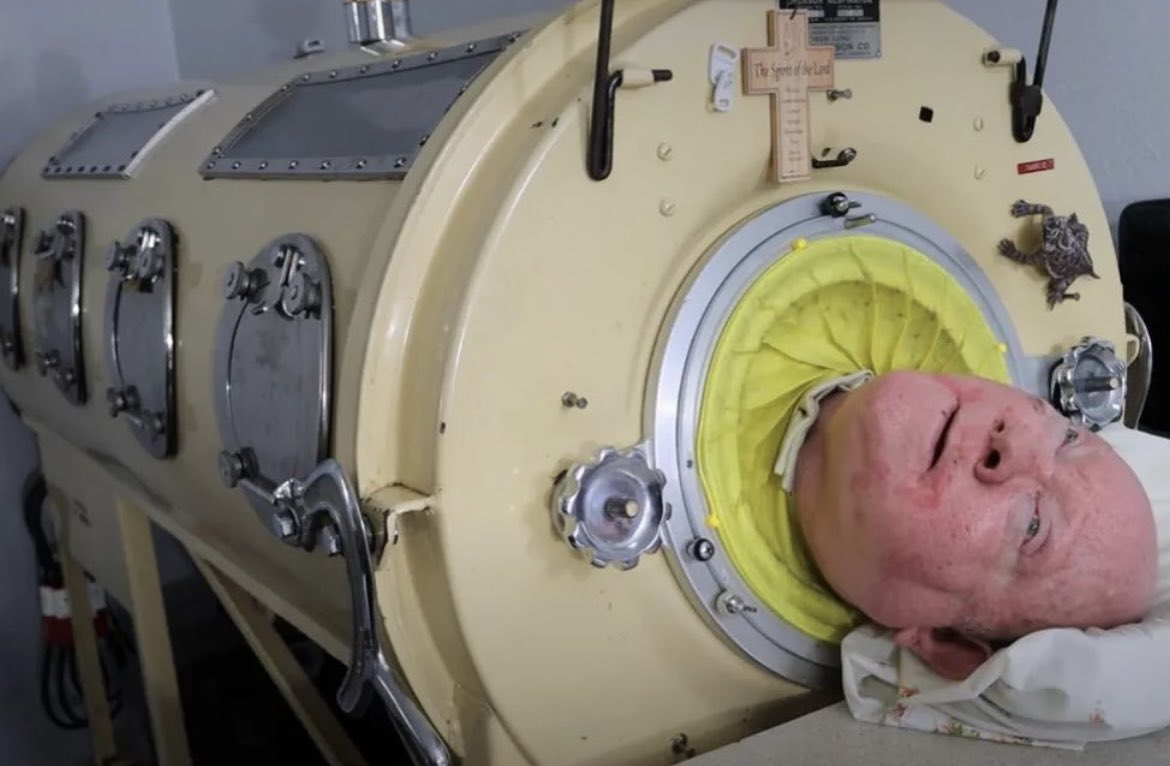
Polio Survivor Paul Alexander
The world recently lost a remarkable individual, Paul Alexander, who defied limitations for an incredible seven decades. Stricken by polio at the tender age of six in 1952, Alexander’s life took an unimaginable turn. The virus, which crippled his diaphragm, left him unable to breathe independently. This necessitated him to spend the rest of his life within a specialized machine known as an iron lung.
Born in 1946, Paul Alexander’s childhood coincided with one of the worst polio outbreaks in US history. The year he contracted the virus saw nearly 58,000 cases, primarily affecting children. Polio, a highly contagious disease caused by the poliovirus, attacks the nervous system and can lead to paralysis. In Alexander’s case, the damage left him paralyzed from the neck down.
Rushed to a hospital in Texas, Paul Alexander awoke to a reality far different from anything he could have imagined. He found himself encased in a large metal cylinder, the iron lung. This negative pressure ventilator functioned by creating cyclical changes in air pressure around his chest and abdomen, essentially forcing air into his lungs and mimicking natural breathing.
While the iron lung became his lifeline, it also confined him to a world within a metal shell. However, Alexander’s spirit remained unbroken. He refused to let his circumstances define him. With unwavering determination, he pursued education, graduating with a bachelor’s degree and later earning his Juris Doctorate. This feat, accomplished with limited mobility, stands as a testament to his exceptional intellect and perseverance.
News of Alexander’s extraordinary life spread far and wide. He earned the nickname “Polio Paul” and was recognized by Guinness World Records as the individual who spent the longest time living inside an iron lung. Despite the physical limitations, Alexander became a lawyer and even published a memoir in 2020, offering a glimpse into his unique world and unwavering spirit.
His story transcended the confines of his metallic chamber. It became a powerful symbol of human resilience, a beacon of hope for those facing seemingly insurmountable challenges. Alexander demonstrated that life, in all its richness, could be embraced and lived meaningfully irrespective of physical constraints.
The development and widespread use of the polio vaccine in the mid-1950s eradicated the disease in many parts of the world. This medical marvel came too late for Alexander, but it ensured countless others would be spared the devastating effects of polio. His life serves as a stark reminder of the importance of vaccination programs in protecting public health.
Paul Alexander’s passing on March 11, 2024, at the age of 78, marked the end of an extraordinary journey. While the iron lung sustained his physical existence for seven decades, it was his indomitable spirit and unwavering thirst for knowledge that truly defined him. He leaves behind a legacy of courage, resilience, and a testament to the boundless potential of the human spirit.
A Look at Iron Lungs and Polio
Paul Alexander’s story compels us to delve deeper into the world of iron lungs and the disease that necessitated their use. Iron lungs, while crucial for those with respiratory paralysis, were cumbersome and required constant maintenance and a reliable power source. With advancements in medical technology, the use of iron lungs has dwindled significantly. Modern ventilators, smaller and more portable, have largely replaced them.
Polio, once a crippling and potentially fatal disease, has been brought to the brink of eradication through widespread vaccination programs. The World Health Organization (WHO) spearheads global efforts to eliminate polio, with significant progress achieved in recent decades. However, the fight is not entirely over. Polio remains endemic in a handful of countries, highlighting the need for continued vigilance and vaccination efforts.
A Life Less Ordinary: The Enduring Legacy of Paul Alexander
Paul Alexander’s life story serves as a potent reminder that human potential transcends physical limitations. He defied the odds, lived a full and meaningful life, and inspired countless others. His legacy lies not just in the extraordinary length of time he spent in an iron lung, but in the extraordinary way he chose to live his life within it. His story is a call to embrace life’s possibilities, to push boundaries, and to never give up on the pursuit of one’s dreams.






